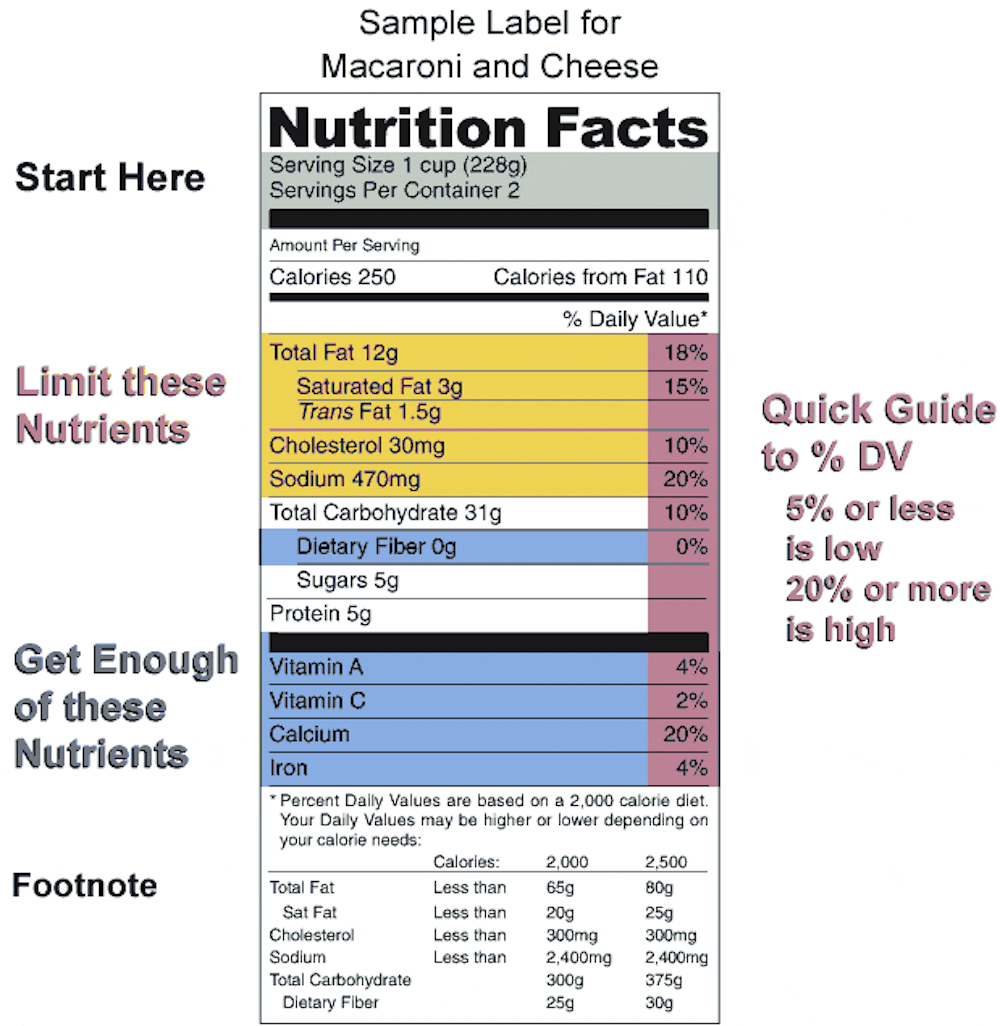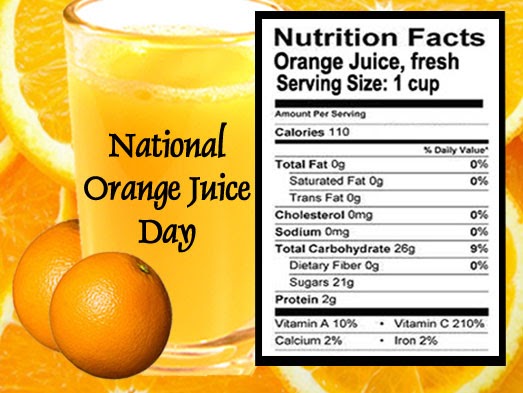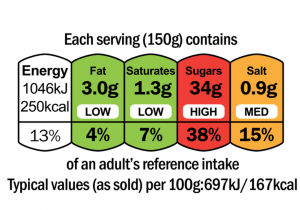38 kcal on food labels
Calories for Hundreds of Foods: Your Calorie Chart Database Soups are often low in calories, but check the label since any foods can be included. Nuts & Legumes Calories Legumes Beans and other legumes are nutritional foods with calories from carbs, fat, and protein. Nuts & Seeds Nuts and seeds are high in fat and therefore calorie dense, but they are very nutritious. Oils & Fats Calories Oils & Fats How to Read Carbohydrates on Food Labels - GlycoLeap Read carefully when looking up the food labels of imported food products, especially from these countries. Avoid High-Sugar Products. Apart from learning how to read carbohydrates on food labels, a rule of thumb that you should follow when controlling carbohydrate intake is to always choose low-sugar or sugar-free products.
Are kcal the same as Calories? - Cronometer The Calories used on food labels are the same as kcals (kilocalories). 1 Calorie = 1 kcal Was this article helpful? 163 out of 167 found this helpful Have more questions? Submit a request

Kcal on food labels
Check the label | Food Standards Agency energy (kilojoules (kj) and calories (kcal)) fat saturates sugar salt This is an image of the traffic light label found on some foods. The traffic light label is colour coded and shows that green is low in a particular nutrient, amber means medium and red is high in a nutrient. Looking at labels - British Nutrition Foundation You'll see on labels, the calorie content is given in kcal and kJ, which are short for kilocalories and kilojoules. Kilocalorie is another word for the well know 'calorie'. Kilojoules are the metric measurement of calories (the calorie figure multiplied by 4.2). Calorie labelling in the out of home sector ... Calorie labelling is not required in certain establishments when food is provided 'in-house'. However, where the food at that establishment is provided by another organisation with 250 or more...
Kcal on food labels. How Do They Calculate Calories on Food Labels? - Food and ... 5 grams of fat (5 x 9 = 45 calories) 22 grams of carbohydrate (22 x 4 = 88 calories) 2 grams of protein (2 x 4 = 8) ...should contain approximately 140 calories. It's important to recognize that 4-9-4 is an average, and not an exact amount. Improving the design of nutrition labels to promote ... The NFP on packaged foods. The passage of the Nutrition Labeling and Education Act of 1990 required the provision of standardized nutrition information through the NFP on most packaged foods in the United States. 26 Although some nutrition information on the NFP can vary based on the food product, the standard label includes information about serving size, kilocalories (kcal; calories) and ... How Many Calories Does One KCAL Equal? | livestrong You can find the calorie amount on the food's nutrition label. This information will help you gauge whether you're consuming too many calories per day. NHS points out that the more vigorously you do physical activity, the more calories you'll lose. What's more, if you're trying to lose weight, you'll need to use more energy than what you consume. Why Do Food Labels Use Calories Instead of Joules or ... The U.S. standards for food labels call for using “calories.” This is actually the colloquial term for kilocalorie, or kilogram calorie.
Convert kJ to kcal - Unit Converter Definition: A kilocalorie (symbol: kcal or Cal) is a unit of energy defined based on the calorie and is equal to 1000 calories or 4.1868 kilojoules. A calorie (small calorie) is defined as the amount of energy required to increase the temperature of one gram of water by one °C. Difference Between Kcal and Cal (With Table) - Ask Any ... The nutritional values of the food items are generally recorded and then mentioned in the labels on the packet. They symbolise the energy content of that food item. One kilocalorie is equal to one thousand calories. This means, to convert a kilocalorie into a calorie, you just need to multiply the numerical value of the kilocalorie by 1000. This is why calorie content is always listed in 'kcals' So that's where the 'k' comes in - it stands for 'kilocalories'. For every 1 'kcal' measure, you can assume you're actually counting 1,000 scientific calories, which sounds pretty scary if you... Understanding food labels: portions, energy | Health24 However, many manufacturers still list the energy content of foods in calories (cal) or use both kJ and calories. Confusion arises when the label expresses the energy content in kcal (or kilo-calories). Energy contained in food is always expressed in kcal, but most manufacturers forget to use the 'k' in front of the 'cal' in the abbreviation.
PDF NUTRITION LABELLING INFORMATION - Food Standards Agency 100g/ml of food. • Energy must be displayed as kJ/kcal. • Information must be displayed in this order in tabular format (if space on the label does not allow for tabular format then linear format is permitted). • of which sugarsIf the product contains no added salt a statement indicating 'naturally occurring How to Calculate Kcal | Healthfully Look on the food label of a product. If there is no label, look up the nutrition information on line. A good website for this is . See how many grams of protein the food contains. Multiply the amount of protein grams by four. This is the amount of kcals in the protein portion. How To Read Food Labels - Perfect Keto This act mandated that, with a few exceptions, all packaged foods needed nutrition labels — thus creating the black-and-white labels we see on packaged foods today. The nutrients that required labeling included: Calories Calories from fat Total fat Saturated fat Cholesterol Sodium Total Carbohydrate Dietary fiber Sugars Protein Vitamin A Vitamin C How to Read a Food Label - WebMD WebMD gives you tips on how to use the Nutrition Facts food label to help manage conditions like type 2 diabetes, high blood pressure, heart disease, and high cholesterol.
Calories on the New Nutrition Facts Label - U.S. Food and ... One package of food may contain more than one serving, so, if you eat two servings you would be getting two times the calories shown on the label. For example, if you ate one serving of the food...
Nutrition Labelling - Centre for Food Safety - Home The energy value of a food can be expressed as kilocalorie (kcal) or kilojoule (kJ) or both in the nutrition label. 1 kcal is roughly equal to 4.2 kJ. If you want to compare the energy contents of two different products which are expressed differently, you have to do a simple calculation so that the unit of expression is the same.
Kcal vs. Calories: Differences and How to Convert Calories may also be expressed as kilojoules (kJ), with one calorie or kcal equaling 4.18 kJ. How are these terms used? Regulations require that food and beverage manufacturers display a nutrition...
Food labels - NHS Most pre-packed foods have a nutrition label on the back or side of the packaging. These labels include information on energy in kilojoules (kJ) and kilocalories (kcal), usually referred to as calories. They also include information on fat, saturates (saturated fat), carbohydrate, sugars, protein and salt.
Kcal vs. Calories: Differences and Converting Energy in food can also be measured in kilojoules (kJ). One calorie (kcal) equals 4.18 kJ or 4,184 joules (J). If you're looking to convert calories to kJ, multiply the number of calories by 4.18....
The Science Behind Calories and Nutrition Facts Labels ... The calorie number we see on food labels refers to a kilocalorie (kcal), which is also known as a large calorie or a food calorie. A kilocalorie is 1 000 calories. One kilocalorie is the amount of energy it takes to heat one kilogram of water one degree Celsius at sea level.
Why are the calories in a nutrition label displayed in Kcal and ... Calories in the nutrition labels are determined by calculating the amount of carbs, protein and fat in a food, remember that every gram of fat provides 9 ...
How to Calculate Kilocalories | livestrong A kilocalorie (kcal) is the same as one large calorie, which is equal to 1,000 small calories. But small calories are uncommon in everyday use — large calories, or kilocalories, are what you're used to seeing on food labels and in nutrition and exercise recommendations.
Food Label Accuracy of Common Snack Foods - PMC As specified by the Code of Federal Regulations ( 10 ), calories on food labels represent metabolizable energy, i.e. total (gross) calories minus calories that are excreted in stool and urine. However, doubts regarding the accuracy of energy content labeling of packaged foods have been expressed.
Kilocalories Vs. Calories: Understanding The Difference ... While cals and kcal are the most common food energy units used by different countries and companies on their food nutritional labels, some countries also use kilojoules. Some countries known for using kilojoules (or kJ for short) are those in the European Union, New Zealand and Australia. So How Do Kilocalories Vs. Calories Vs. Kilojoules Compare?
Labelling-Determination of the energy content of food In the UK and other member states of the European Union manufacturers of pre-packaged food must label the nutritional energy of their products in both kilocalories ("kcal") and kilojoules ("kJ"). The energy content of food is generally given for 100 g and for a typical serving size.
How to Understand and Use the Nutrition Facts Label | FDA That is two times the calories and nutrients shown in the sample label, so you would need to double the nutrient and calorie amounts, as well as the %DVs, to see what you are getting in two...
Calorie labelling in the out of home sector ... Calorie labelling is not required in certain establishments when food is provided 'in-house'. However, where the food at that establishment is provided by another organisation with 250 or more...
Looking at labels - British Nutrition Foundation You'll see on labels, the calorie content is given in kcal and kJ, which are short for kilocalories and kilojoules. Kilocalorie is another word for the well know 'calorie'. Kilojoules are the metric measurement of calories (the calorie figure multiplied by 4.2).
Check the label | Food Standards Agency energy (kilojoules (kj) and calories (kcal)) fat saturates sugar salt This is an image of the traffic light label found on some foods. The traffic light label is colour coded and shows that green is low in a particular nutrient, amber means medium and red is high in a nutrient.











Post a Comment for "38 kcal on food labels"